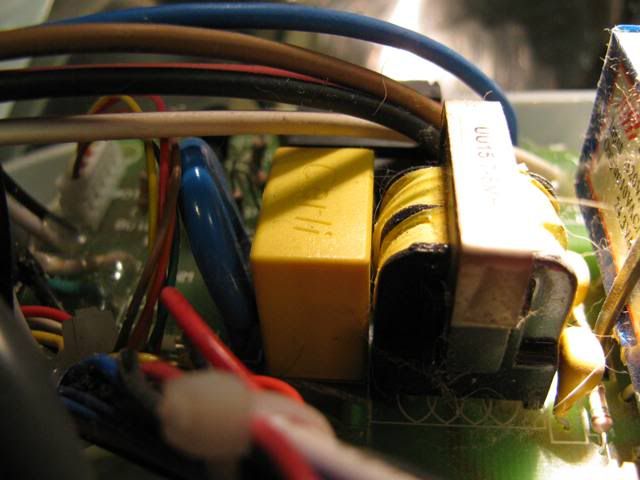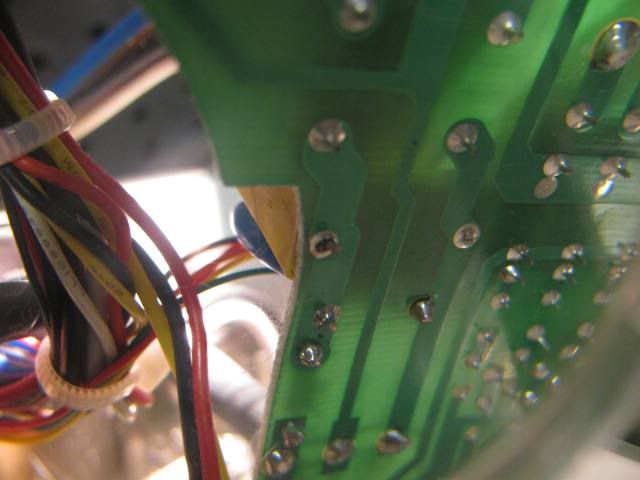ELA
Senior Member
- Occupation
- Electrical Test Engineer
We had a strange one occur at our house this week. My son said that during the day he witnessed a bedroom touch lamp blink intermittently at the same time that an Ionized Air Cleaner (IAC) turned itself on ... Spooky huh?
The next night we awoke to the very same happening. The table lamp was flickering and the Ionized Air Cleaner (IAC) came on by itself at "turbo speed".
I found that whenever the IAC was turned on/off manually the touch lamp would blink on/off intermittently. Even when power was turned off, (but still plugged in), I could bang my hand on the side of the IAC and the lamp would flicker on/off.
I took the air cleaner into another room, away from the lamp, and the IAC appeared to work just fine. Lamp was unaffected.
So ... I am aware of the fact that touch lamps are very susceptible to transients and RF (and certain spooks). At this point I suspect something inside of the IAC is generating EMI , even though it seemed to work fine.
I took both the IAC and the lamp into the garage and I could duplicate the same scenario as in the first bedroom. I further found that the lamp would only be affected by the IAC (on/off cycles) when the lamp was physically within 5ft of the IAC (but electrically on another circuit), or was electrically connected within 12-15ft (on the same circuit) that the IAC was plugged in.
More investigations to follow. At this point I know what the cause is but would like to try some more experiments and I am little afraid right now, being so close to Halloween and all....
and all....
I find it very interesting that if it were not for the touch lights presence in the room I may not have suspected a problem with the IAC (other than that turning itself on thing)
The unit does have a timed mode where it can turn itself on automatically and so at first I thought that might have accidentally been enabled, but it was not.
What do you think, haunted or not?
I may have to go out and buy an AFCI to see what it thinks:roll:
The next night we awoke to the very same happening. The table lamp was flickering and the Ionized Air Cleaner (IAC) came on by itself at "turbo speed".
I found that whenever the IAC was turned on/off manually the touch lamp would blink on/off intermittently. Even when power was turned off, (but still plugged in), I could bang my hand on the side of the IAC and the lamp would flicker on/off.
I took the air cleaner into another room, away from the lamp, and the IAC appeared to work just fine. Lamp was unaffected.
So ... I am aware of the fact that touch lamps are very susceptible to transients and RF (and certain spooks). At this point I suspect something inside of the IAC is generating EMI , even though it seemed to work fine.
I took both the IAC and the lamp into the garage and I could duplicate the same scenario as in the first bedroom. I further found that the lamp would only be affected by the IAC (on/off cycles) when the lamp was physically within 5ft of the IAC (but electrically on another circuit), or was electrically connected within 12-15ft (on the same circuit) that the IAC was plugged in.
More investigations to follow. At this point I know what the cause is but would like to try some more experiments and I am little afraid right now, being so close to Halloween
I find it very interesting that if it were not for the touch lights presence in the room I may not have suspected a problem with the IAC (other than that turning itself on thing)
The unit does have a timed mode where it can turn itself on automatically and so at first I thought that might have accidentally been enabled, but it was not.
What do you think, haunted or not?
I may have to go out and buy an AFCI to see what it thinks:roll:



